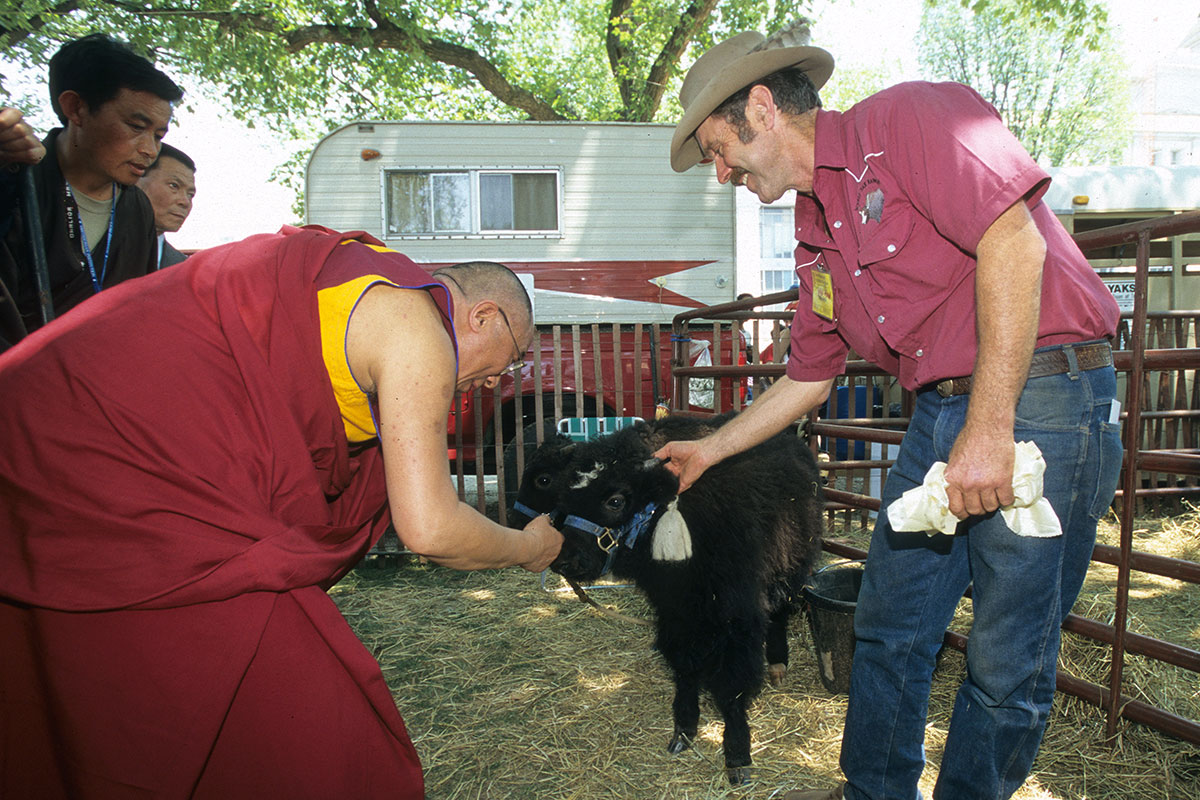Reporting on the Past: What Twenty Years of Festival Press Reports Reveal

Curator’s note: As part of the 50th anniversary of the Smithsonian Folklife Festival, interns have been researching materials from past Festivals, including program book articles, photographs, and archival papers. Here, Dannah King shares insights from the Festival publicity reports.
During my internship at the Center for Folklife and Cultural Heritage, I was tasked with reading through and taking notes on publicity reports from the Smithsonian Folklife Festival. The goal was to sort through this collection of newspaper and magazine article clippings published between 1980 and 2003 to glean interesting facts and trends. While many articles tended to be repetitive or dry, there were also some gems: highly descriptive, full of stories and quotes, and containing detailed bios and quirky facts about Festival participants.
Some stories are particularly memorable. For example, in 1997 the Festival featured a Chinese family in the Mississippi Delta program who demonstrated a unique blend of Chinese and Southern cooking, like their recipe for stir-fried collard greens. Reporters conveyed surprise about the very fact of their existence—Chinese Americans in the Mississippi Delta? This surprise, repeated in some form every year about other traditions, seems significant because it displays the Festival’s effectiveness in showcasing diverse cultural traditions that exist within the United States and in presenting the uncommon as an integral part of our common experience.
Often, the newspaper articles provide a glimpse behind the scenes before or during the Festival. One story chronicled the trials and tribulations of a group of builders from Mali featured in 2003. This group of “mud men” as they are called had come several weeks early to start building a huge, elaborate gateway on the National Mall. In Mali, this is done during the dry season in intense heat, which hardens the mud used as the primary building material. That June in Washington, D.C., the weather was relatively cool and extremely rainy. The mud men labored all day in the cold, only to see their hard work melt back into the Mall when the rain came. To top it off, they did not have proper footwear for the conditions. So, the reporter wrote, Festival technical director Robert Schneider took them all to be fitted for work boots, and treated them to lunch at McDonald’s.

-
During the 1989 Folklife Festival, one of the buffalos on the National Mall gave birth.Ralph Rinzler Folklife Archives
-
The “mud men” from Mali had to complete this massive gate in difficult conditions at the 2003 Festival—but were rewarded with Filet-O-Fish sandwiches at McDonald’s.Photo by Hugh Talman, Ralph Rinzler Folklife Archives
-
The Chow family demonstrated their Mississipian and Chinese food traditions at the 1997 Festival.Photo by Hugh Talman, Ralph Rinzler Folklife Archives
Another surprising event took place during the 1989 American Indian program. After hours on the Mall, a buffalo gave birth to a healthy 120-pound calf. She was given the name Nasca Necasere or “summer calf” by the participating Mandan tribal elders. The timing of the birth was seen as a symbol of traditional arts and a celebration of the recent acquisition of the collection that would form the basis for the future National Museum of the American Indian. Reporters and photographers got into the spirit, rushing to draft birth announcements with headlines like “It’s a girl!” and “A Happy Mother” to honor the occasion.
Reading through these reports, I learned many new things about the Festival and the people and cultures presented each year. Like many of the reporters, I was astounded by the sheer level of construction it takes to produce the event, and by the curators’ dedication to authenticity. And, like the reporters, I was especially drawn to the strange and wonderful kind of events that happen annually: from cooking muskrat to building functioning oil wells, from polka dances to a visit from the Dalai Lama.
From these anecdotes, it is clear that the Festival touches the lives of those who attend and participate each year, and that those who work to put it together have a high level of dedication to the purpose and people of the Festival. In this 50th anniversary year, it is inspiring to witness the continuity of this important work preserving and educating the public about living cultures and traditions. This realization made the hours of reading and taking notes worthwhile.
Dannah King was as an intern at the Center for Folklife and Cultural Heritage in spring 2017. She recently graduated from BYU Hawaii with a degree in international cultural studies with emphasis in humanities and communications. This post also included input from interns Sophie Auffret, Lauren White, and Julia Berley.



